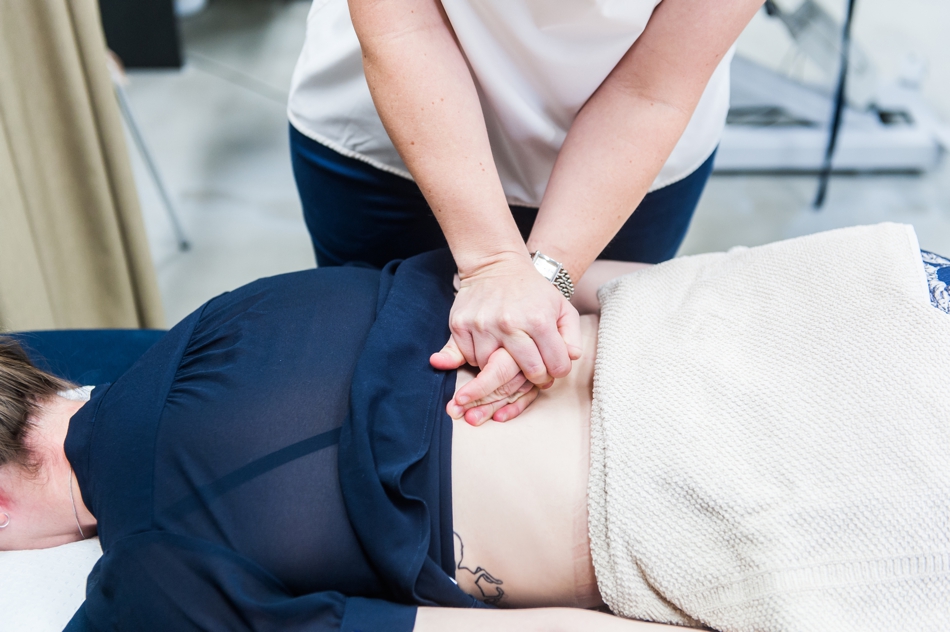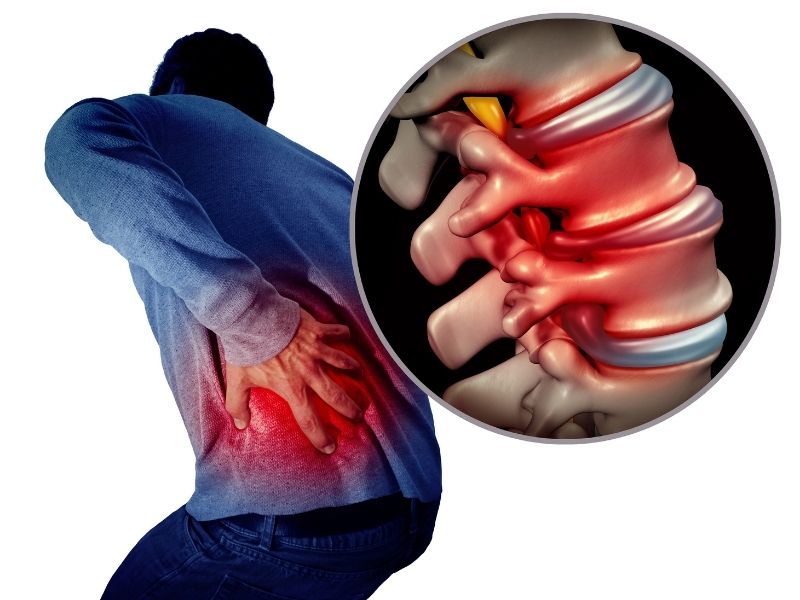Need to find a back physio specialist? At Pivotal Motion, we’ve seen it all before with the back being one of our most treated areas. From sore muscles to disc bulges, back injury and more, our back injury Physiotherapy treatment can help get you back to your best in no time!
Pulling, pushing, lifting and throwing all require back muscles to certain extents, as does walking or standing. Similar to having broad shoulders, a wide back is a symbol of strength and stability. Despite this, the back is also regularly associated with pain, being the second most common location in the adult body to experience pain.

What does back injury physiotherapy involve?
The back is a complex region of the body. Our trained staff can help identify what the problem might be. As physiotherapists, our job involves attending to injuries at any stage of the process and reversing the effects as well as teaching you how to prevent it from recurring.
This can start off with advice and self management techniques combined with manual lower back pain physiotherapy and progress to high level exercise and even sports-specific treatment. The earlier you get to the back physiotherapist, the faster you recover, so don’t hesitate to give us a call if your spine is starting to give you grief.

What is the Primary Function of the Back?
The main function of the back is to protect and hold together the spine, or vertebrae, which is essential for body movement. The back also supports body weight through correct posture, and provides additional protection for vital organs.
The vertebrae are split into three sections, cervical, thoracic and lumbar, all of which have their own function and role. The lumbar, or the lower back, allows us to bend forward and backwards, allowing us the flexibility to move. Due to its proximity to the hip joint, it is also key to supporting body weight. The thoracic vertebrae, or middle back, attaches to the rib cage, and ensures that organs such as the heart and lungs are protected. The cervical vertebrae, or upper back, supports the neck and head, while protecting the nervous system.
WHAT ARE THE SYMPTOMS OF BACK INJURIES?
Due to its variety of uses and importance in supporting body weight, the back often becomes strained or overworked. Symptoms can range from a dull throbbing pain at the end of a hard day’s work, to a sharp, searing pain whilst bending over. Pain or spasms are usually the body’s way of telling you that a particular muscle group needs to rest.
Consistent back pain can often be as a result of weak or continuously overworked muscles and ligaments, and can hamper day-to-day activities. Factors such as back injury or spinal misalignments can play a major role in back pain, as can other body imbalances.
More serious injuries include the likes of spinal dislocations and bulging discs. Spinal issues such as back injury can also cause further problems if not properly addressed early on in back injury rehab.


HOW CAN I AVOID BACK INJURY OR RECOVER FROM A BACK INJURY?
Due to its uses, a back injury can limit day-to-day living. Thankfully, there are a few things that can help limit the chance of an injury, as well as assist in the recovery stage.
Avoiding situations which require you to lift heavy or awkward objects by yourself can lower the risk of lower back injuries, as can using correct lifting technique when weightlifting. Ensuring correct posture when standing and sitting can also address muscle strains or injuries, as the straightened vertebrae shares the weight of the body.
Recovering from a back injury can be painstakingly slow, as the back is a key factor in all body movements. Rest, along with the application of heat packs (depending on the type of injury), are the most common recommendations. For more serious issues such as spinal curving, surgery is often the only way to fully straighten the spine, but exercises such as yoga and back physio treatments have shown to have impact on the curve of the spine.
STRUCTURAL INTEGRITY OF THE BACK
Most of us are fairly willing to ignore human anatomy until we injure ourselves and start to wonder why we are in pain. The spine is one of the most perplexing structures in the body, which makes it very hard to provide an accurate diagnosis without an MRI (after all we still haven’t mastered the art of x-ray vision or MRI vision). Knowing your spinal anatomy however, does help a fair bit.
Here’s a basic overview of your spine.

THE BONES
You spine is made up of 33 bones called vertebrae. There are usually 7 cervical (neck) vertebrae, twelve thoracic (mid back), 5 lumbar (lower back), 5 sacral (base of the spine) and 4 coccygeal (tailbone). The sacral region begins as 5 unfused bones which begin fusing at the age of approximately 16 -18 and fuses completely in the early thirties to form the sacrum.
In some people, there may be extra vertebrae in one region and the equal number less in another region to compensate. It is rare to have changes in the number of cervical vertebrae. The change in thoracic and lumbar vertebral numbers is a more regular occurrence.
THE LIGAMENTS
There are a great number of ligaments that hold the vertebrae together during movement. The two main ligaments are the anterior longitudinal ligament (which prevents hyperextension or bending too far backwards) and the posterior longitudinal ligaments (which prevents hyperflexion or bending too far forwards).
Other ligaments that resist these movements include the ligamentum flavum, supraspinous and interspinous ligaments. The intertransverse ligament resists lateral flexion or side bending.
THE JOINTS
The main joints of the spine are the intervertebral joints and the facet joints or (zygopophyseal joints, a.k.a z-joints).
The intervertebral joints are the connection between one vertebral body and the next, whereas the facet joints are further out to the side of the vertebral bodies connecting the ‘articular processes’ of adjacent vertebrae as shown in the picture.
The facet joints help the joints glide and allow rotation, but also limit excess range of motion.


THE SPINAL CORD
The spinal cord is a bundle of nerve tissue that runs from the brain down through the spinal cord, finishing at approximately the first lumbar vertebrae. The cord itself is protected by three meninges (or membranes), namely the pia, arachnoid and dura mater as well as the cerebrospinal fluid that surrounds it.
Nerve fibre tracts or pathways run through the length of the spinal cord transmitting impulses about pain, touch, pressure, temperature change or movement etc. The ‘nerve tissue’ in the spinal cord is made up of ‘grey’ (the cell bodies of the nerve) and ‘white’ matter (the ends of the nerve cells which help transmit information).
The spinal nerves are formed from sensory and motor projections of the grey matter which relay information from your brain to the muscles and vice versa.
THE DISCS
The infamous intervertebral discs consist of 2 layers. The outer layer (annulus fibrosis) is made up of elastic fibrocartilaginous rings whereas the inner layer (annulus pulposus) is a more jelly-like structure. It is made up of type II collagen and other substances (proteogylcan and hyaluronan chains to be more specific) which allow it to absorb the different forces that the spine undergoes.
In the event that the loads are too high, or with repetitive loading, the nucleus pulposus oozes into the annulus. In extreme cases, the nucleus can tear fibres of the outer annulus and even damage associated ligaments.
Inflammatory processes can occur in mild to moderate cases as well as severe ones. These processes can affect the spinal nerves and affect the area and intensity of pain.
THE MUSCLES
The back has three groups of muscles. The superficial and intermediate muscles help control the movements of the upper and lower limb as well as some respiratory movements. The deep group act specifically on the maintenance of vertebral alignment during static postures and specific movements.
Aches and pains in muscles can arise for several reasons.
Prolonged postures and the development of trigger points are a very common cause of muscle pain as are repetitive loading and trauma. Muscles can also become stiff following injury to deeper structures in the back, and this can significantly affect pain and movement.
HOW CAN A TRAINED BACK PHYSIOTHERAPIST HELP YOU?
With the basics in mind, it is evident that the back is a complex region of the body. This is why it is vital that we gain a comprehensive history from you before we form a hypothesis about what the problem might be.
So why not contact Pivotal Motion Physiotherapy today so that you can receive a correct diagnosis and recovery plan. Our experienced and qualified back injury rehab team will help you every step of the way. Call us on 3352 5116 or book an appointment online for back injury physiotherapy and lower back pain physiotherapy.

